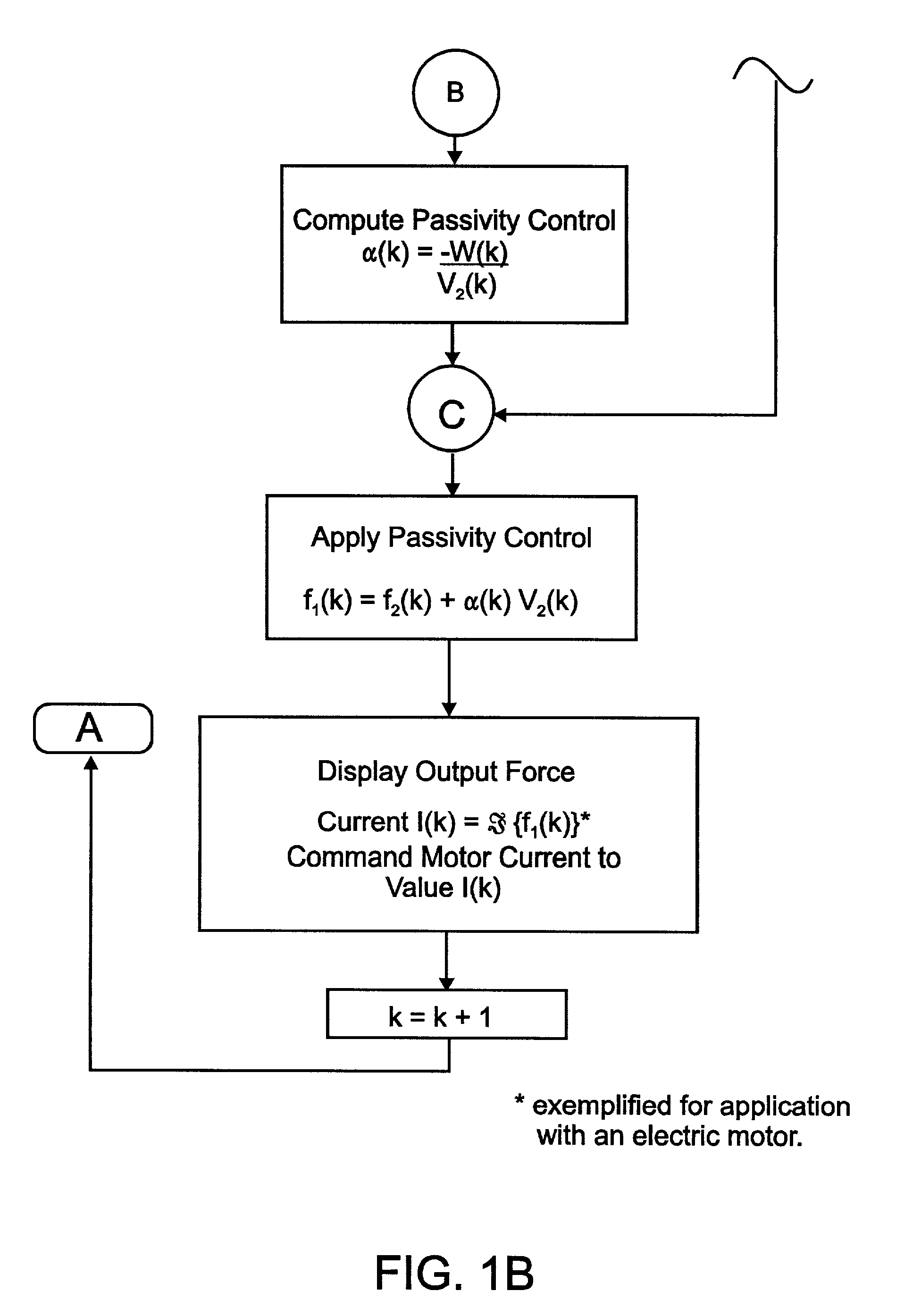Time domain passivity control of haptic interfaces
- Summary
- Abstract
- Description
- Claims
- Application Information
AI Technical Summary
Benefits of technology
Problems solved by technology
Method used
Image
Examples
examples
[0169]We illustrate the operation of the Passivity Observer and Passivity Controller with simulation of a simple virtual wall with impedance causality (velocity in, force out). Two separate simulations, one in Matlab / simulink, and one in a C program using trapezoidal integration, were used. The wall consists of a first order, penalty based, spring damper model (FIG. 10) executed at 1000 Hz. We can easily create active behavior of this system by setting the damping parameter, b, to a negative value. The wall generates forces only when x(t)>0. In our simulation, the wall is probed by a point following a sinusoidal velocity trajectory (FIG. 11a). With positive damping (k=710 N / m, b=50 Ns / m, FIG. 11b), the Passivity Observer value increased with time although not monotonically. When the damping parameter is changed to a negative value (b=−50 Ns / m, FIG. 11c) the Passivity Observer returns after each “bounce” to a more negative value, indicating the active behavior of the environment. Fin...
PUM
 Login to View More
Login to View More Abstract
Description
Claims
Application Information
 Login to View More
Login to View More - R&D
- Intellectual Property
- Life Sciences
- Materials
- Tech Scout
- Unparalleled Data Quality
- Higher Quality Content
- 60% Fewer Hallucinations
Browse by: Latest US Patents, China's latest patents, Technical Efficacy Thesaurus, Application Domain, Technology Topic, Popular Technical Reports.
© 2025 PatSnap. All rights reserved.Legal|Privacy policy|Modern Slavery Act Transparency Statement|Sitemap|About US| Contact US: help@patsnap.com



